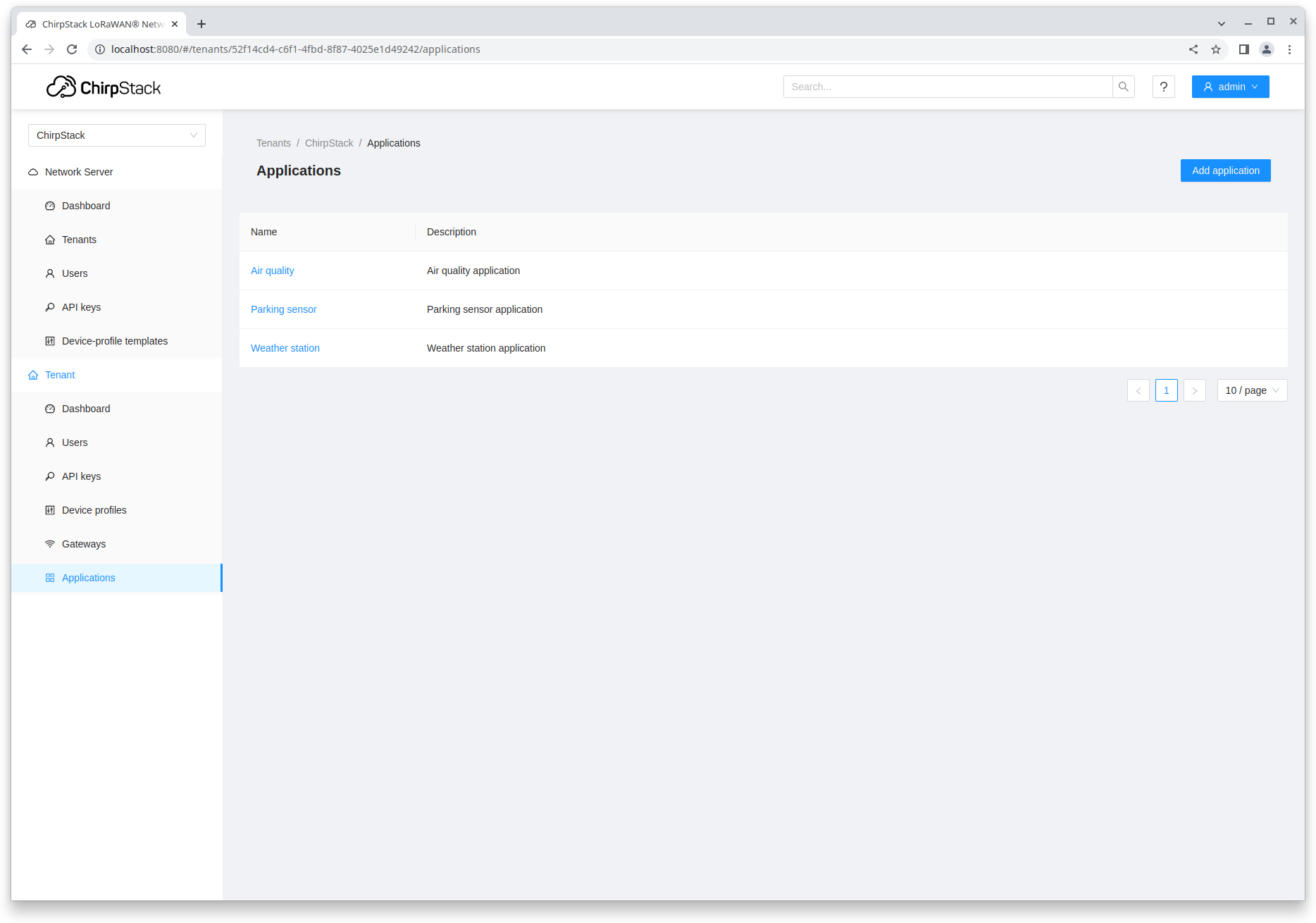ChirpStack is an open-source LoRaWAN Network Server which can be used to setup LoRaWAN networks. ChirpStack provides a web-interface for the management of gateways, devices and tenants as well to setup data integrations with the major cloud providers, databases and services commonly used for handling device data. ChirpStack provides a gRPC based API that can be used to integrate or extend ChirpStack.

End-devices of Class B allow for more receive slots. In addition to the Class A random receive windows, Class B devices open extra receive windows at scheduled times. In order for the End-device to open it receive window at the scheduled time it receives a time synchronized Beacon from the gateway.
End-devices of Class C have nearly continuously open receive windows, only closed when transmitting. Class C end-device will use more power to operate than Class A or Class B but they offer the lowest latency for server to end-device communication.
When the end-device has ADR enabled, the ChirpStack LoRaWAN network-server will ensure that the device will operate using the most efficient data-rate and tx-power. this will not only save energy at the device-side, but will also optimize the usage of the radio spectrum, lowering the risk of collisions.
The ChirpStack LoRaWAN application-server provides live frame-logging per gateway and device. It will display all the RX / TX meta-data, together with the raw LoRaWAN PHYPayload in a readable format. It is like Wireshark for LoRaWAN!
Whether you want to use a sub-set of the LoRaWAN defined channels (e.g. for the US band) or want to configure additional channels (e.g. for the EU band), the ChirpStack LoRaWAN network-server will make sure the device stays always in sync with the network configured channels (using the CFList field and / or mac-commands).
The ChirpStack LoRaWAN application-server supports the creation of multiple organizations to which (administrator) users can be assigned. By integrating the user-accounts into the MQTT broker authentication, organizations will only see their own data.
ChirpStack provides gRPC and REST APIs for integration with external services. By default all application data is published to a MQTT broker, however integrations are available for various cloud-providers, databases and visualization platforms.
The ChirpStack LoRaWAN network-server supports LoRaWAN 1.0 and LoRaWAN 1.1 devices simultaniously, including all LoRaWAN Regional Parameter Specification revisions and bands.
Please refer to the ChirpStack documentation to learn more about all the features provided!
Please report a bug by creating an issue at the related GitHub repository. GitHub links can be found at the documentation page of each component.
For questions and community support, please refer to support.chirpstack.io.
For commercial support, contact Orne Brocaar, the author of ChirpStack.